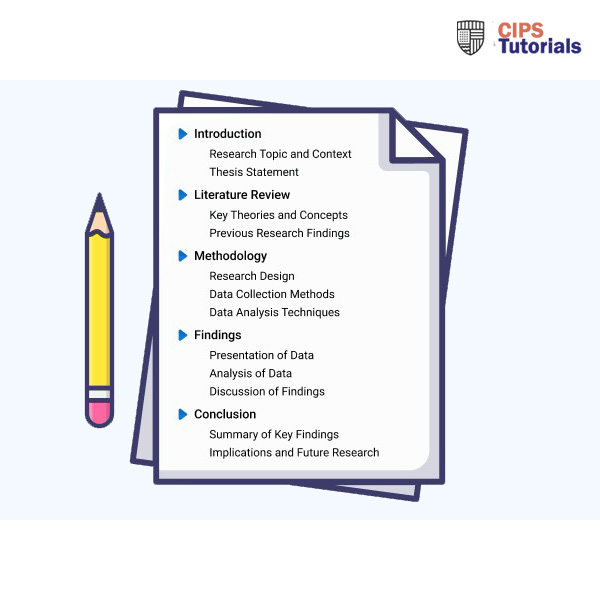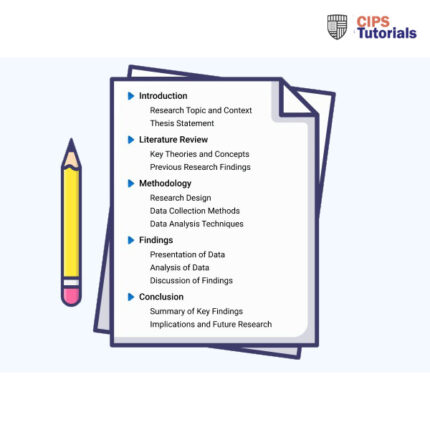Description
Solution
Declaration
I declare that I have personally prepared this assignment. The work is my own, carried out personally by me unless otherwise stated and has not been generated using Artificial Intelligence tools unless specified as a clearly stated approved component of the assessment brief. All sources of information, including quotations, are acknowledged using the appropriate citations and references. I declare that this work has not gained credit previously for another module at this or another University.
I understand that plagiarism, collusion, copying another student and commissioning (which for the avoidance of doubt includes the use of essay mills and other paid-for assessment writing services, as well as unattributed use of work generated by Artificial Intelligence tools) are regarded as offences against the University’s Assessment Regulations and may result in formal disciplinary proceedings.
I understand that by submitting this assessment, I declare myself fit to be able to undertake the assessment and accept the outcome of the assessment as valid.
Signature,
Table of Contents
1.1 Background of the Study. 4
1.5 Significance of the Study. 5
CHAPTER 2: LITERATURE REVIEW.. 6
2.1 Adopted theoretical models. 6
2.2 Review of Current Literature. 6
2.2.1 Sustainable sourcing in Oman Oil and Gas Sector Supply Chains. 6
2.2.2 Sustainable Sourcing Features of P2P System.. 7
2.2.3 Impact of Implementing P2P on Sustainable Sourcing. 7
2.2.4 Improving sustainable sourcing in the oil and gas supply chains. 8
3.1 Suggested Methodologies. 10
3.2 Research Justification. 10
3.3 Data Collection Methods and Data Analysis Techniques. 11
3.4 Future Work Timeline (Research Plan) 11
3.4.1 Gantt Chart Analysis. 11
3.5 Possible Challenges and Mitigation Measures. 12
6.1 Appendix 1: Summary of P2P Steps. 17
CHAPTER 1: INTRODUCTION
1.1 Background of the Study
In the recent past, Procurement to Pay (P2P) has attracted immense popularity in different organisations and sectors (Ramos, 2024); (Pelkonen, 2024) and (Långström, 2021). For Oman oil and gas industry, in 2023, an estimation of the revenues was at $26.1 billion informed by average oil price of $55 per barrel with oil and gas sector attracting 53 and 14% of the overall revenues (Administration, 2024). For improved efficiencies and sustainability in their supply chains, Oman oil and gas sector can prioritise on investing on P2P system. This is line with the Net-Zero Emissions Strategy as they are progressing to achieving net-zero emissions (OmanLNG, 2024). The need for an efficient supply chain is further underscored by report on expected oil output decrease by 2024 with 3.3%. A summary of SWOT analysis is illustrated in the following;
| Strengths:
· Already implementing modernised procurement system (Althabatah, 2023) · Resources availability. |
Weaknesses:
· Lack of awareness on P2P implementation (Mohungoo, 2020) · Budget allocated in other areas in sustainable practice. |
| Opportunities:
· Improving P2P systems implementation. · Growth in sustainable strategies (Adebayo, 2024) |
Threats:
· Increased changes in the sustainability strategies. · Policy and legislation changes in sustainability strategies (Biermann, 2022) |
Table 1: SWOT Analysis Summary (Author)
Despite of multiple research works focusing on integrating sustainable sourcing and improving efficiencies of supply chain networks, limited focus is evident on the relevance of P2P system. This research will focus on developing an elaborate analysis of application of P2P system in Oman oil and gas. Also, impact of implementation of P2P on sustainable sourcing will be evaluated (Pelkonen, 2024).
1.2 Problem Statement
The issue to be evaluated in this report is need for sustainability and efficiency in supply chain networks Post-COVID pandemic and economic downturn (Özatay, 2020). There lack appreciation of success of P2P system in supply chain is an impediment to enhancing efficiencies of Oman oil and gas sector and improved efficiencies (Rentizelas, 2020). Past studies have majorly delved on stakeholders’ relationships and embracing 3Ps Model of sustainability which looks at people, planet and profits (Mishra, 2024). Specifically, there lacks any research work which have directly pursued an evaluation and detailed analysis of P2P system implementation.
1.3 Research Aim
This research aims to investigate the impact of Procurement-to-Pay (P2P) on sustainable sourcing in the oil and gas supply chain in Oman.
1.4 Research Objectives
The significance of this research study would include;
- To explore the objectives of sustainable sourcing in Oman oil and gas sector supply chains.
- To identify the sustainable sourcing features of P2P System.
- To access the impact of implementing P2P on sustainable sourcing in Oman’s oil and gas supply chain.
- To propose recommendations for improving sustainable sourcing in the oil and gas supply chains.
1.5 Significance of the Study
Most of the past studies in sustainable sourcing have focused on adoption issues from end-user context (Ramos, 2024). The concept of P2P system and its impact on sustainable sourcing has not attracted immense focus in modern research. Hence, this research is significant since it will offer new theoretical perspective on the P2P system on sustainable sourcing. The identified findings would form background for future research in this area.
CHAPTER 2: LITERATURE REVIEW
2.1 Adopted theoretical models
In this research, theoretical framework will play a critical role in guiding the direction to evaluating the problem. According to (Varpio, 2020), a theoretical framework is embraced not to develop a summary of already existing research in an area of focus. However, its intention is grounding relevant studies and provide a reader with detailed sense of theoretical approach in a situation identified for studying. In this research, the theoretical framework include strategic sourcing theory and resource-based view theory. The link of strategic sourcing theory with P2P is informed by (Singh, 2020) findings that sustainable sourcing enhance costs savings, increased profits, procurement operations and strong organisation performance. Similarly, procurement-to-pay integrate purchasing and accounts payable systems for creating increased efficiency. Similarly, for Resource-Based View Theory, (Davis, 2021) note that sustainable sourcing enhance integration of organisation and economy for sustained competitive advantage. For P2P system, it offers organisations with economies of scale allowing costs reduction, more production for less and eventually leveraging on competitive advantage.
2.2 Review of Current Literature
2.2.1 Sustainable sourcing in Oman Oil and Gas Sector Supply Chains
From the reviewed literature, the concept of sustainable sourcing has been adequately researched. P2P is defined as a strategy for integrating purchasing and accounts systems for creating fully automated systems (CIPS, 2024). From a broad context, (Ekechukwu, 2021) defines it as a “process for selecting suppliers while putting into account social, ethical and environmental performance”. In a slightly different approach, (Pathak, 2024) focusing on food industry and embracing Triple- Bottom line identified it as an undertaking for reducing environment implication, improving social input and compliance with regulations. The definitions are different in context of oil and gas sector where identify sustainable sourcing as prioritising on profitable growth while concurrently prioritising on delivering social, environment and economic results (Pathak, 2024). The studies which have evaluated this concept include (Ekechukwu, 2021); (Ramos, 2024) and (Ramos, 2024) which identify the capability of increasing efficiencies and offering immense visibility to the procurement and supply chain. These findings are nevertheless distinct from (Ogbu, 2024) using the relational view theory evaluating sustainable sourcing in Oman oil and gas identified the process as purchase of goods and services with minimum negative implications on the environment in their entire lifecycle.
2.2.2 Sustainable Sourcing Features of P2P System
According to (Ramos, 2024), P2P system used for ensuring an organisation has access to their supplier of preference with negotiated costs with limited necessity for manual paperwork and interventions. In Oman oil and gas industry, this assists in reduction of errors and consolidation of manual process.
The studies with similar findings include (Ramos, 2024); (Ekechukwu, 2021); and (Krasikov, 2023) identifying existence of various sustainable sourcing features of P2P System. Similarly, according to (Ekechukwu, 2021) the sustainable sourcing discovers and select the suppliers whose commitment is on achieving sustainability. Hence, with the sustainable sourcing involving a process of selecting the right/most fitting supplier, P2P actualises the process. As evidenced in (Krasikov, 2023), as part of P2P, they can embrace sense-making, data collection, and data reconciliation to make a decision on the sustainable organisation operations. Depending on the results of sustainable sourcing, it is possible making approvals of all suppliers promptly, freeing resources, controlling and improving spend and maximising the overall value of sourcing negotiations (Ogbu, 2024). Therefore, sustainable sourcing is a major feature of the P2P system owing to the integrated characteristic of their operations.
2.2.3 Impact of Implementing P2P on Sustainable Sourcing
Please click herein to access this project in full
Related Papers
(Solution) New CIPS PDV Market Analysis; Procurement Role in Value for Money Outcomes
(Solution) CIPS Advanced Level Contract & Category Management in P&S – APGM
- This business report has been used for evaluating the category and contract management in Eco2Solar Company.
- In particular, Eco2Solar operates to improve their project management (PM) and Cost Management (CM) as part of their category management has been evaluated.
- The areas of focus has included an evaluation of requirements for initiating and preparing category management, strategic and conventional sourcing process and role in contract management, tools and techniques for mapping categories of direct and indirect expenditure.
- From the findings obtained, innovative measures for improving the supply chain in light of categories and category management has been recommended.
- Further, in this business report, the contract administration and contract management in case of category management has similarly been evaluated in context of category management this is with assessment of risks and implementation of risk management techniques in contracts being reviewed in context of category management.
- In order to appreciate the best practice in category and contract management in the selected Eco2Solar construction spend area, use of quantitative and desk research has been pursued to obtain relevant data.
- Additionally, different tools have been applied such as Mendelow Stakeholders analysis, CIPS Category Management Cycle, CIPS Contract Management Cycle, Suppliers positioning, PESTLE analysis and SWOT analysis.
- Considering this business report findings, Eco2Solar need to improve their approach for risk management and efficiency and effectiveness of category and contract management.
- From these finding, the stakeholders collaboration in Eco2Solar need to be improved which can be done by embrace of blockchain technologies.
- Also, by identifying their PS&M teams training and capacity development, they would be able to improve on their category management. In the contemporary procurement environment, the training and capacity development has been noted as the best practice to manage gaps in their operations. Also, the findings indicate the need for Eco2Solar to improve their category management of their construction spend by coming up with appropriate SLA’s agreement and KPIs while ensuring they capitalise on innovativeness.
- For the project management and cost management, this being a long-term investment would require an improved auditing. This can entail embrace of analytics to analyse and present contract management data and appropriate management strategy.
- The importance of improved collaboration is ensuring stakeholders active involvement and awareness on core decisions made as this could harness their practice, contribution and suggestions noted.
- By successfully pursuing stakeholder analysis, it is important to maintain stakeholders relations which promote Eco2Solar organisation image and increase their market share.


